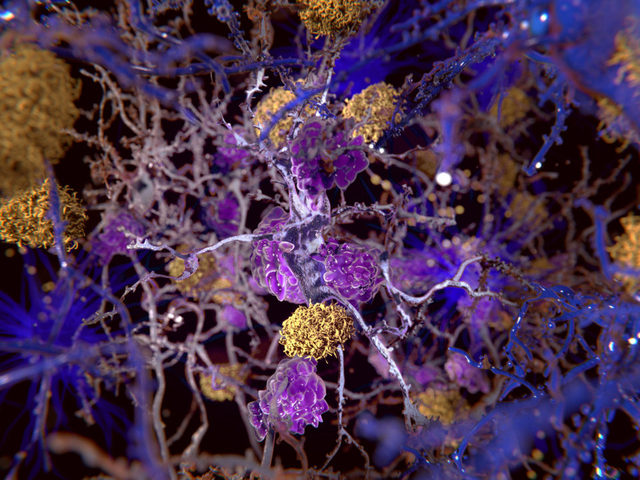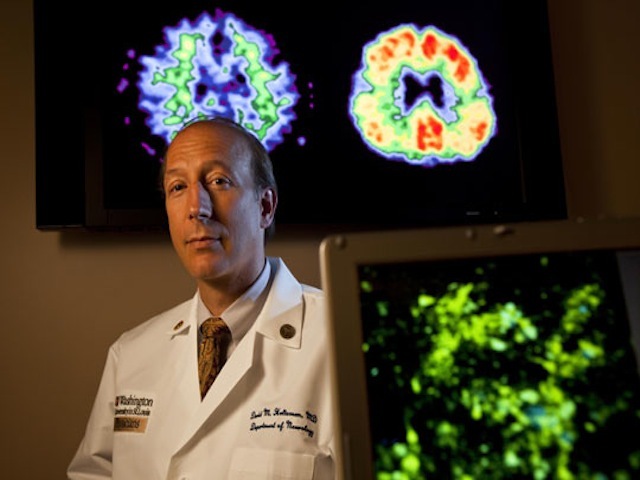Four years ago, researchers made a splash with the first in vitro model of Alzheimer’s pathology. In that advance, dubbed “Alzheimer’s in a dish,” neurons and astrocytes grown in a three-dimensional gel matrix produced amyloid plaques and hyperphosphorylated tau, proving that amyloid somehow begets tau. Now, Doo Yeon Kim and Rudy Tanzi of Massachusetts General Hospital in Charlestown and Hansang Cho of the University of North Carolina, Charlotte, have taken the model to a new, lethal dimension. Using a sophisticated, multi-chambered microfluidic chip, they mimicked the microglia activation, invasion, and cell death seen in AD brain. Their “AD on a chip” suggests that neuron- and astrocyte-derived chemokines lure microglia to sites of amyloid accumulation, where the microglia then set off a neuroinflammatory pandemonium that leads to severed axons and dead cells. Blocking migration or downstream inflammatory mediators spared neurons, the authors showed. The work appeared June 27 in Nature Neuroscience.
-AD on a chip: Tri-culture of neurons and glia breeds neuroinflammation.
-Chemokines, cytokines spur microglia activation, infiltration, astrogliosis, and neuronal death.
-Microfluidic system can help unravel pathways of neurodegeneration.
“This new and improved three-dimensional culture holds great promise for understanding the contribution of innate immunity to AD evolution and for preclinically evaluating experimental therapeutics that target it,” wrote Terrence Town, University of Southern California, in an email to Alzforum (see full comment below).
The work “lays the foundation for some important future studies,” wrote Christopher Henstridge and Tara Spires-Jones in a commentary accompanying the paper. “Many AD risk factors are in genes highly expressed in microglia, such as ApoE, Trem2 and Clusterin, and the system could be used to discover how these genes affect microglial influence on AD progression,” they wrote.
The following is an excerpt from an article published by NEWSWEEK on August 2, 2018 titled ALZHEIMER’S IN A DISH COULD LEAD TO NEW TREATMENTS FOR DISEASE:
“Our original ‘Alzheimer’s in a dish’ system recapitulated the plaques and tangles typically seen in the brains of patients with Alzheimer’s disease, but did not induce neuroinflammation,” Rudolph Tanzi, director of the Genetics and Aging Research Unit at the MGH Institute for Neurodegenerative Disease (MIND) and co-senior author of the latest paper, said in a statement.
“Studies have shown that we can have many plaques and tangles in our brains with no symptoms, but when neuroinflammation kicks in, exponentially more neurons die and cognitive impairment leading to dementia is induced. A complete model of Alzheimer’s pathology needs to incorporate that ‘third leg of the stool.’”






